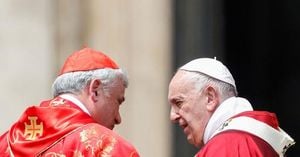On March 19, 2025, Brazil’s Central Bank, through its Monetary Policy Committee (Copom), announced a significant increase in the basic interest rate, raising the Selic from 13.25% to 14.25%. This decision reflects the Bank’s ongoing strategy to combat inflation, which currently hovers around 5.06%. The unanimous vote by the committee underscores the urgency with which authorities are approaching the economic landscape.
Sidney Lima, an analyst at Ouro Preto Investimentos, stated, "This decision makes credit more expensive, reduces consumption, and may slow down the economy in the medium term." As credit costs rise, both household and corporate buying activities are expected to decline, which could lead to a broader deceleration of economic growth in Brazil.
This latest hike marks the fifth consecutive increase in the Selic rate and is particularly notable because it brings the rate to levels not seen since the economic crisis during former President Dilma Rousseff’s administration. In fact, the current rate parallels those from October 2016, which reflects a critical period in Brazil's economic history. Given that the trajectory of rising interest rates began in September, the total increase thus far amounts to 3.75 percentage points, demonstrating the central bank's vigorous approach to stabilize the economy.
As markets reacted to the announcement, expectations are that the Selic may further rise to 15% by the end of this year. This impending adjustment reflects an acknowledgment by the Copom of ongoing inflationary pressures and the critical challenges permeating global economic conditions as well.
Economists at Bradesco interpreted the Copom's strategy as one geared towards creating contractionary conditions to markedly decelerate economic activity throughout 2025. They maintain a scenario suggesting a peak in the Selic rate reaching 15.25% per year mid-year. With uncertainty surrounding global economic shifts and domestic pressures, such projections mandate a cautious outlook.
Meanwhile, despite the rate hike, Brazil has slipped from second to fourth place in the global rankings for real interest rates. These rates, adjusted for inflation, now sit at 8.79%. This crucial metric highlights how Brazil's monetary policy contends with external economic pressures, particularly from nations like Turkey and Argentina, which currently report higher real interest rates.
The Central Bank calculates the neutral real interest rate—the level that neither stimulates nor suppresses economic growth—at 5%. Thus, the current environment continues to underscore the delicate balance required in next steps for Brazilian monetary policy.
The implications of high interest rates also present opportunities for investors. With the Selic rate elevated, fixed-income investments are gaining renewed attention. Investment vehicles such as CDBs (Certificado de Depósito Bancário), LCIs (Letra de Crédito Imobiliário), and government bonds tied to the Selic are becoming increasingly attractive.
Furthermore, ETFs like the LFTB11 from Investo, which are primarily composed of treasury securities, become emerging alternative investment channels. Cauê Maçanares, CEO of Investo, elucidates that this particular ETF offers a fixed tax rate, making it a favorable choice among investors looking to capitalize on the current environment where traditional government bonds follow a regressive tax schedule. "The ETF LFTB11 has a fixed rate of 15%, regardless of the investor’s length of stay," he adds, showcasing its appeal.
As the Central Bank continues to navigate these turbulent waters, it is imperative for stakeholders—from policymakers to everyday consumers—to remain vigilant and informed about the potential impacts on both personal finances and broader economic health. The Copom's recent decision serves as a pivotal reminder of the far-reaching implications that monetary policy has on the national economic landscape, especially in times of inflation.



